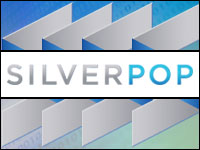
It’s no longer uncommon for marketers to customize the messages they send via email, but such personalization capabilities haven’t typically been extended to Web content. Enter Silverpop, which last week released a beta version of Smart Content, a new product designed to enable just that.
Smart Content is not a stand-alone offering; rather, it leverages Silverpop’s various modules in marketing and tracking and website design. The end result is a product that allows users to customize their Web pages for individual customers based on recent purchases or actions that person might have taken.
“Say a customer named Jim comes to visit a website,” Bryan Brown, Silverpop’s vice president of product strategy, told CRM Buyer. “The website would recognize Jim as a loyal customer with 3,000 reward points. The website would greet Jim with a note that because he is a premium member with 3,000 reward points, he gets a free upgrade.”
Alternatively, Brown continued, the site could thank “Sarah” for watching a product video the other day and say, “we would love to hear what you think of it.”
‘Personal Marketing’
“Our goal with Smart Content is to help marketers solve the challenge of moving from audience-based marketing to personal marketing,” Brown explained. “Marketers have been struggling with one-size-fits-all marketing products and platforms.”
Even with e-commerce applications that specialize in personalization, “the best tech out there are the recommendation engines,” he added.
In those scenarios, moreover, the user would have had to have purchased something or otherwise logged into the site or allowed cookies to capture his or her data for the recommendation engines to work, he noted.
“We wanted to build something that would be applicable to all visitors,” Brown said.
How It Works
Smart Content uses a number of Silverpop’s tech offerings and modules to bring a user to the point where his website can greet visitors by first name and ask friendly questions about a recently viewed product video.
It starts by using Silverpop’s single identity technology to connect to the marketing database and the website.
“So, the moment a visitor hits a site, it is instantly alerted about what is known about this person,” Brown explained.
The personal content — that is, the ‘Hi Jim, we are upgrading you to Silver because of your 3,000 points’ messaging — is coded as native HTML rather than hard-coded as inflexible iframes.
“By not using iframe, you are not boxed into a section — the site developers can use Smart Content all over the page,” he said.
With these tools in hand, the marketer is able to write the content and calls to action — scripts that can be placed in the context of the website. Business rules also guide how the messaging is displayed.
The end result, Brown said, is a product that has become a fluid part of the page.























































